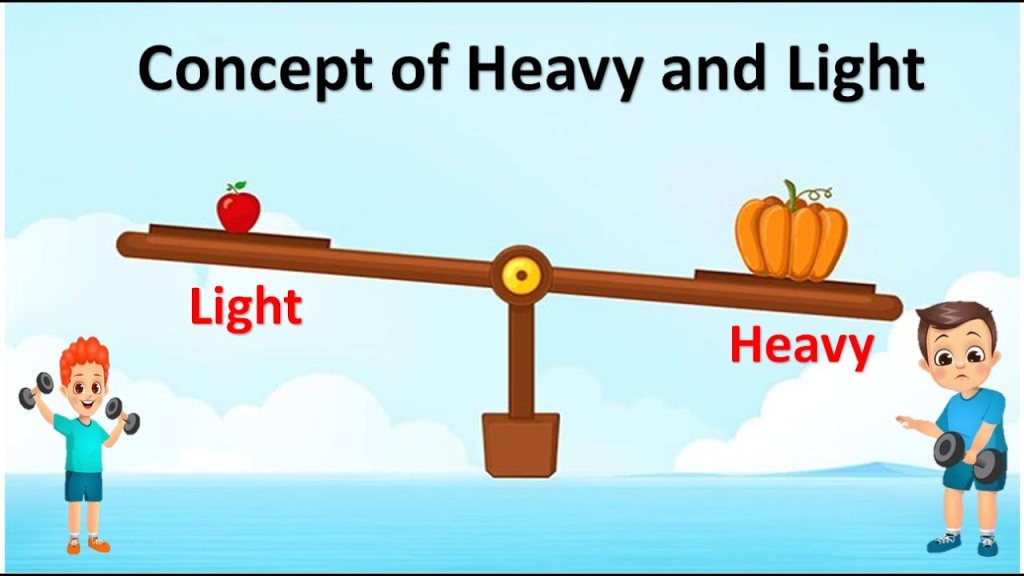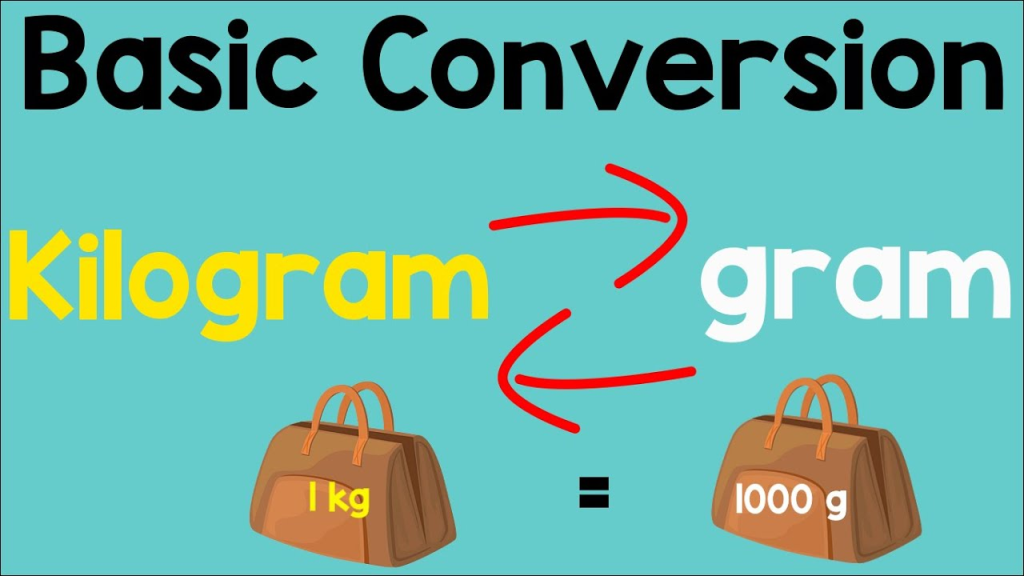How Heavy? How Light? – Complete Guide For Class 4 Math Chapter 12
Welcome to iPrep, your Learning Super App. Our learning resources for the chapter, How Heavy? How Light? in Mathematics for Class 4th is designed to ensure that you grasp this concept with clarity and perfection. Whether you’re studying for an upcoming exam or strengthening your concepts, our engaging animated videos, practice questions and notes offer you the best of integrated learning with interesting explanations and examples.
In this chapter, students will embark on an exciting journey to explore the concept of weight in everyday life. They will learn to identify and compare the weights of various objects, understand the units of measurement used for weight, and apply these concepts through practical activities. This foundational knowledge will not only aid in their mathematical skills but also enhance their understanding of the world around them. Let’s now understand the objectives of learning the chapter “How Heavy? How Light?
Objectives Of Learning How Heavy? How Light?
Students are introduced to the idea of weight in this chapter, which is fundamental to day-to-day living. Whether it’s picking up a pencil, carrying a school bag, or lifting a big object like a bucket full of water, understanding weight helps us travel the environment better. Students will learn how to estimate weights, compare weights, and understand units of measurement such as grams and kilograms in this chapter.
By the end of this chapter, students will be able to:
- Differentiate between light and heavy objects.
- Understand the concept of standard units of weight: grams (g) and kilograms (kg).
- Compare and estimate the weight of objects.
- Use balance scales to measure weight.
Let’s dive into the various aspects of this chapter, using practical examples and activities to explain the concepts.
Understanding Weight
An object’s weight indicates how heavy or light it is. Like a feather, certain things are light, and other things, like a sack full of books, are heavy. However, how can we tell which is heavier?
The concept of weight comparison is introduced to students in Class 4. Sayings like “A pencil is lighter than a water bottle” or “A stone is heavier than a leaf” are among the things they will learn to say. The basis for complex subjects in weight and measurement is laid by this fundamental knowledge.

Comparing Weights: Heavier and Lighter
Lifting things with your hands is one of the easiest ways to compare weights. You may ask a student to hold a book in one hand and a little object, like an eraser, in the other. The book feels heavier than the eraser right away to the student.

Example:
- Eraser vs. Book: The book is heavier than the eraser.
- Feather vs. Stone: The stone is heavier than the feather.
This is how students start learning the concept of heavier and lighter objects.
Units of Weight: Grams and Kilograms
Once students understand the difference between heavier and lighter objects, they are ready to learn about units of weight. Just like we measure length in centimeters and meters, we measure weight in grams and kilograms.
- Grams (g):
Grams are used to measure very light objects. For example, a pencil or a small packet of chips would be measured in grams.- 1 gram is a very small unit, so we usually use it for lightweight items.
- Kilograms (kg):
Kilograms are used to measure heavier objects, like a bag of rice or a watermelon.- 1 kilogram = 1000 grams.
This means if something weighs 1 kilogram, it is equal to the weight of 1000 grams.
- 1 kilogram = 1000 grams.

Examples:
- A pencil weighs around 20 grams.
- A school bag might weigh around 2 kilograms.
Measuring Weight
To understand weight better from the chapter “How Heavy? How Light?”, students need to learn how to measure it. The two main tools for measuring weight are:
- Balance Scale: This is the standard instrument for comparing two objects’ weights. Each side of a balance scale contains two pans. To determine how heavy an object is, set standard weights on its other side after placing it on one side.

Example Activity:
- Place a mango on one side of the balance scale.
- On the other side, place different standard weights (100g, 200g, 300g, etc.) until the scale is balanced.
- When the scale balances, the total weight of the standard weights is equal to the weight of the mango.
- Weighing Machine: This is a more modern tool used to measure weight. You simply place an object on the machine, and it displays the weight.
Estimating Weight
Estimating weight is an important ability that students will acquire in the chapter “How Heavy? How Light?”. Making an educated approximation about something’s weight or mass is called estimation. This ability comes in handy in daily life, such as when packing a bag or going grocery shopping.
Activity for Estimation:
- Show students a small packet of chips that weighs 50 grams.
- Now, show them an apple and ask, “Do you think the apple is lighter or heavier than the chips?”.
- By comparing with a familiar object, students can start making educated guesses about the weight of different items.
Converting Between Grams and Kilograms
Students will also learn to convert between grams and kilograms. Since 1 kilogram is equal to 1000 grams, converting between the two units becomes easy with practice.
Examples:
- If a watermelon weighs 2 kilograms, it also weighs 2000 grams (because 1 kilogram = 1000 grams, so 2 kilograms = 2 × 1000 = 2000 grams).
- If a pencil weighs 50 grams, how many kilograms is it?
To convert grams to kilograms, divide by 1000.
50 grams = 50 ÷ 1000 = 0.05 kilograms.
Heaviest and Lightest: Comparing Groups of Objects
One of the fun activities in the chapter “How Heavy? How Light?” is comparing groups of objects to find out which is the heaviest and which is the lightest.
Activity:
- Gather five different objects: a pencil, a book, a water bottle, a banana, and a shoe.
- Ask students to predict which is the heaviest and which is the lightest by holding each object.
- Use a balance scale or weighing machine to check the actual weights of the objects.
- Now, have students rank the objects from lightest to heaviest based on their weights.
This activity helps students reinforce their understanding of weight by applying it to real objects.
Solving Real-Life Problems
The chapter “How Heavy? How Light?” also introduces students to word problems involving weight. These problems help students apply what they’ve learned about grams and kilograms to solve everyday problems.
Example:
- Ria’s bag weighs 2 kilograms. Her lunchbox weighs 500 grams. What is the total weight of Ria’s bag and lunchbox?
Solution:
Convert everything to grams for easier calculation:
2 kilograms = 2000 grams.
2000 grams + 500 grams = 2500 grams.
So, the total weight of Ria’s bag and lunchbox is 2500 grams (or 2.5 kilograms).
By solving such problems, students practice addition and subtraction with weights, making them more comfortable with the concepts of grams and kilograms.
Activity: Make Your Balance Scale
A fun way for students to learn about weight is to make their balance scale.
Materials:
- Two small plastic bowls.
- A hanger.
- String.
Instructions:
- Tie the two bowls to the two ends of the hanger using the string.
- Now, hang the hanger somewhere it can swing freely.
- Students can place small objects (like marbles or erasers) in each bowl and see which side is heavier by observing how the hanger tilts.
This homemade balance scale allows students to visually compare weights and get hands-on experience with the concept.
Conclusion
In conclusion, Chapter 12 – How Heavy? How Light? Offers a comprehensive exploration of weight that is both engaging and educational. Through hands-on activities and practical examples, students learn to differentiate between light and heavy objects, grasp the importance of standard units such as grams and kilograms, and develop essential skills in measuring and estimating weight.
By the end of CBSE Class 4 Math Chapter 12 – How Heavy? How Light? Students will not only have a solid understanding of weight but also the ability to apply this knowledge in real-life scenarios. With iPrep’s interactive resources, learning about weight becomes an exciting journey, laying a strong foundation for future mathematical concepts. We hope you enjoy exploring Chapter 12 – How Heavy? How Light? and continue to enhance your understanding of this vital topic!
Practice questions on Chapter 12 - How Heavy? How Light?
Get your free Chapter 12 - How Heavy? How Light? practice quiz of 20+ questions & detailed solutions
Practice Now








